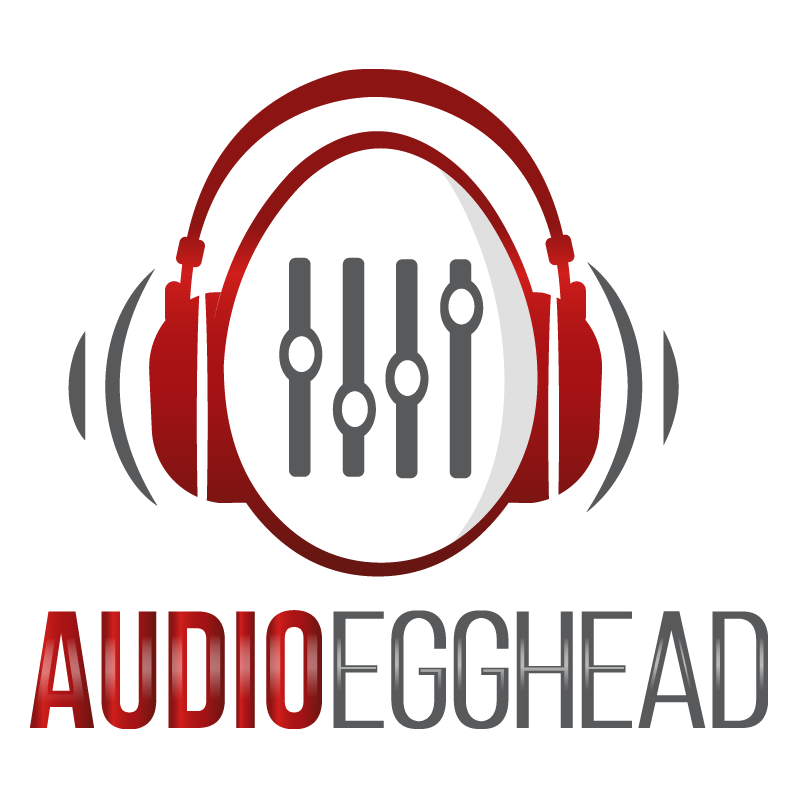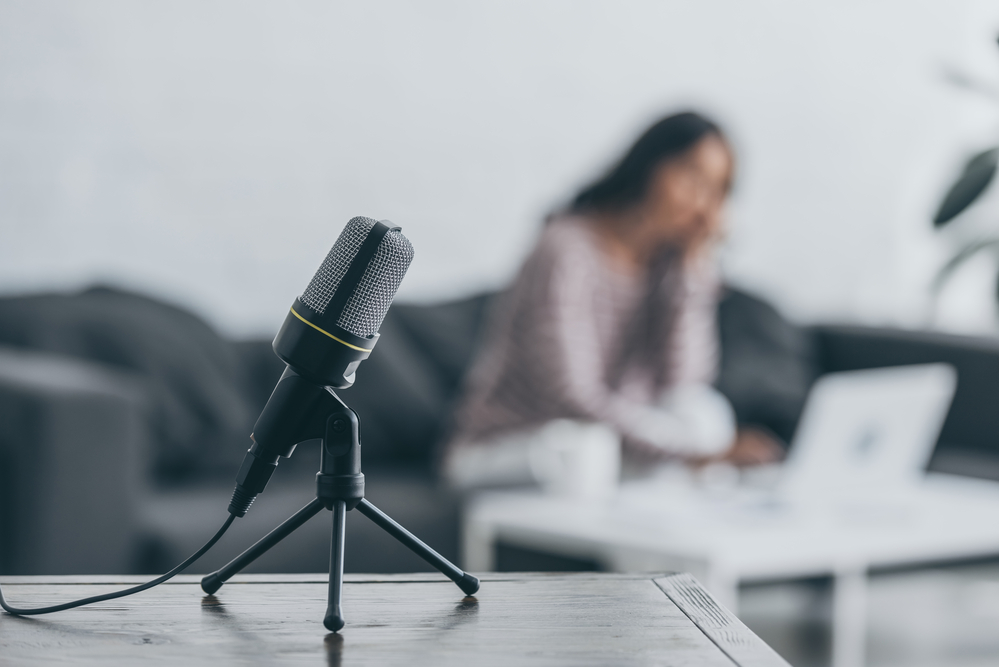Whether you’re an expert in marital advice or scuba diving, podcasts are one the best ways to share your knowledge with a wider audience. But in today’s ever-growing podcast market place, quality is key. Listeners may not hang around for too long if you just slap on your phone’s recorder and say what you have to say. To get that polished, quality sound, you’ll need quality equipment in your home studio, and we recommend buying the best diaphragm condenser mic you can afford.
With so many quality mics on the market, however, it’s hard to know what the best microphone for you is. In this article, we’ll break down ten of the best condenser mic options for podcasting and give you a few insights about how to get great audio without breaking the bank. We’ll cover a few frequently asked questions about condenser mics, offers product specs, pricing, availability, and warranty information for some of the best condenser mic brands on the market. We’ll even offer a few pros and cons for each mic to give you a quick reference for easy shopping.
From entry-level podcasters to seasoned podcasting pros, the right mics, when used with a quality windscreen to minimize ambient noise, background noise, and plosives, can truly make or break a podcast. So, if you’re ready to step up your audio game, for podcasts or voiceovers, then read on to learn more about the best condenser mics for podcasting.
Podcast Microphones FAQ
- What is a Condenser Mic?
- How Does a Condenser Mic Work?
- What Should You Look for in a Condenser Mic?
- What Are the Best Podcast Microphone Brands?
- What’s the Difference Between Condenser and Dynamic Microphones?
1. What Is a Condenser Mic for Podcasting?
Condenser microphones are mics that use a capacitor to convert sound waves into electrical energy. They are commonly used for podcasting but are also a mainstay for musical recording. Unlike some microphones, dynamic mics require power from an external source to function. They receive this power either through an XLR audio cable or USB cable.
2. How Does a Condenser Mic Work?
The capacitor in a condenser mic is usually made up of two thin sheets of metal know as a diaphragm. When sound waves hit this diaphragm, it causes a subtle change in the capacitance within the microphone. This change in capacitance travels into an audio output line and is then boosted into an audible signal when it enters an amplifying device like an audio interface.
3. What Should You Look for in a Condenser Mic?
Some key considerations when shopping for a condenser mic are diaphragm size, brand, overall size, whether you want to have XLR microphone connectivity, or USB connectivity, and price point. Not all diaphragms in a condenser mic are the same size, but we’d recommend looking for a large diaphragm mic. Small diaphragm mics could work but are more often used for recording instruments in your recording studio. There different options for pickup patterns such as polar pattern which picks up sound from the front of the mic, or bidirectional.
It’s also important to consider the physical size of your mic and if you need something small and portable. Also, think about if you want a traditional XLR cable connection or if it would be easier to connect the mic directly into your computer via USB. Last, you may occasionally find a good deal on an off-brand condenser mic, but we recommended sticking with a trusted brand name with a fair price tag.
4. What Are The Best Podcast Microphone Brands?
Some top name brands for condenser mics are Shure, Audio-Technica, Rode, Blue, Samson, and AKG.
5. What’s the Difference Between Condenser and Dynamic Microphones?
When shopping for mics, you may see some mics listed as “condenser” and some as “dynamic.” Dynamic mics do not use a diaphragm like condenser mics but rather use a coil or wire vibrating within a magnetic field. Dynamic mics rarely require external power. They can be less fragile than condenser mics but are also usually less sensitive to sound overall.
How We Reviewed the Following Microphones
For this article, we selected a range of top condenser mics appropriate for podcasters. There’s no singular mic that’s perfect for every podcaster, but these mics represent a range of prices and features so that there’s something for everyone. In the end, we chose one top overall pick from this list of the best condenser mics. Our winner was selected for its superior combination of price, features, quality, and functionality.
Overall Price Range of the Mics on This List
The best condenser mic options can differ in price depending on brand, quality, and aesthetic. The mics on this list range from around $80 to about $300.
What Microphones We Reviewed
- Blue YetiUSB Condenser Microphone
- Heil PR-40 Dynamic Studio Recording Microphone
- Blue Snowball iCECondenser Microphone
- Audio-Technica AT2035 Large Diaphragm Studio Condenser Microphone
- Rode NT-USB Versatile Studio-Quality USB CardioidCondenser Microphone
- AKG C214
- Samson C01U Pro USB Studio Condenser Microphone
- Samson Go
- HyperX Quadcast
- Beyerdynamic Fox USB Mic
Blue Yeti Condenser USB Microphone
Features
 This USB-enabled mic offers an excellent plug-and-play option for podcasters who need to record remotely.
This USB-enabled mic offers an excellent plug-and-play option for podcasters who need to record remotely.
The Yeti comes with a built-in headphone amplifier and an advanced audio-to-digital converter compatible with high-end audio gear and stripped down laptop rigs.
This is a widely used and well-renowned USB Mic—great for simple set up and use.
Pros
- Powered by USB—no audio interface required
- Built-in A/D conversion and headphone amp
- Wide 15 Hz – 22 kHz frequency range
- Multiple recording patterns including an omnidirectional option
Cons
- Must use the table-mount stand that comes with the mic
Price $$
Warranty
This mic comes with a two-year warranty.
Heil PR-40 Dynamic Studio Recording Microphone
Features
 The Heil PR-40 offers an impressive frequency range for podcasters who may need a bit more audio sensitivity.
The Heil PR-40 offers an impressive frequency range for podcasters who may need a bit more audio sensitivity.
This mic will pick up sounds from 28Hz to 18kHz and has an output level of -53.9dB at 1000kHz.
This mic is built like a tank and has all the quality that has made Heil a trusted name in the recording industry for decades.
Pros
- Super audio frequency range
- Excellent build quality
- Strong manufacturer reputation
- Powerful output level
Cons
- On the heavier side
Price $$
Warranty
This mic has a three-year warranty.
Blue Snowball iCE Condenser Microphone
Features
 The Blue Snowball iCE condenser mic is a great choice for podcasters who want a simple option without too many bells and whistles.
The Blue Snowball iCE condenser mic is a great choice for podcasters who want a simple option without too many bells and whistles.
This mic has a custom condenser capsule specifically designed to capture clear vocals. It also boasts a super simple plug-and-play functionality that won’t require any special drivers to work with most computers.
Pros
- Simple design
- Lightweight housing
- Low cost
- Condenser capsule designed for voice
Cons
- Lower dynamic range than some higher-end mics
- High demand can slow shipping (though it’s usually much faster than stated)
Price $
Warranty
Blue covers this mic with a two-year warranty.
Audio-Technica AT2035 Large Diaphragm Studio Condenser Microphone
Features
 Audio-Technica’s AT2035 offers a large diaphragm that can produce high-quality studio-grade audio and voice recordings at home.
Audio-Technica’s AT2035 offers a large diaphragm that can produce high-quality studio-grade audio and voice recordings at home.
It has a cardioid recording pattern, so it will naturally filter out audio spilling from the sides and rear.
With a solid metal body and supportive shock mount, this mic will give plenty of room to grow for new podcasters.
Pros
- Versatile audio range
- Solid build quality
- Small and light, yet powerful
- Comes with a shock mount
Cons
- May offer less nuanced highs than some competing condensers
Price $$
Warranty
Audio-Technica covers this mic with a two-year warranty.
Rode NT-USB Versatile Studio-Quality USB Cardioid Condenser Microphone
Features
 The Rode NT-USB is a versatile and powerful mic for podcasters who want to cover a lot of bases with one purchase.
The Rode NT-USB is a versatile and powerful mic for podcasters who want to cover a lot of bases with one purchase.
This mic comes with a pop filter and also features a built-in audio monitoring circuit.
This means that users can plug a standard set of headphone directly into the mic to keep an ear on sound quality while recording is in progress.
Pros
- USB Mic – easy to use
- Pop filter included
- Desktop tripod legs
- Built-in monitoring jack
- Reasonably priced
Cons
- Some podcasters may find the tripod legs limiting compared with a regular mic stand
Price $$
Warranty
Rode covers this microphone with a one-year warranty.
AKG C214
Features
AKG is a leader in the field of recording microphones, and their C214 is a leader on our list.
This is a premium option for podcasters who want the best condenser mic for their money.
It’s got exceptional clarity at close range and is built with a die-cast frame that would be worthy of a gritty rock-and-roll club.
Pros
- Superior audio quality
- Tough steel casing
- Travel case included
- Excellent for either podcasts or music recording
Cons
- More expensive than some competing mics
Price $$$
Warranty
This mic is covered with a one-year warranty.
Samson C01U Pro USB Studio Condenser Microphone
Features
 Samson’s C01U Pro USB mic offers an impressive 19mm diaphragm and a solid brushed housing to stand up to traveling and abuse.
Samson’s C01U Pro USB mic offers an impressive 19mm diaphragm and a solid brushed housing to stand up to traveling and abuse.
It’s got USB functionality and also has a simple headphone input for easy monitoring directly from the mic.
This is a good quality USB mic at a good price without too many frills.
Pros
- Extra large diaphragm
- Solid housing
- Good value for the price
- Internal monitoring
Cons
- Physically large and may feel clunky to some users
Price $
Warranty
Samson covers this mic with a two-year warranty.
Samson Go
Features
 The Samson Go mic features condenser quality recording with a unique fold-out design you won’t find on any other mics in this range. If you’re looking for the best condenser mic to drop in your pocket and take with you anywhere, then this may be the one.
The Samson Go mic features condenser quality recording with a unique fold-out design you won’t find on any other mics in this range. If you’re looking for the best condenser mic to drop in your pocket and take with you anywhere, then this may be the one.
With selectable mic patterns and an onboard monitoring option, this mic is a steal at a very low price.
Pros
- Great quality at a low cost
- Compact—fits in your pocket
- Selectable mic patterns
- Onboard monitoring
Cons
- No shock mount option
- Lower dynamic range than some bigger mics
Price $
Warranty
This mic is also covered with Samson’s two-year warranty.
HyperX Quadcast
Features
 The Quadcast mic from HyperX is a feature-packed podcasting mic that may appeal to beginners and experts alike.
The Quadcast mic from HyperX is a feature-packed podcasting mic that may appeal to beginners and experts alike.
It’s got a built-in shock mount along with a dial to select the recording pattern.
What’s more, is that the Quadcast features a touch-activating mute button directly on the top of the mic.
This could make it a great choice not only for podcasting but also for live chats and gaming.
Pros
- Built-in shock mount
- Four selectable patterns
- Touch activated mute
- USB-enabled
- Solid value for the money
Cons
- Red and black coloring may not appeal to everyone
Price $$
Warranty
HyperX’s parent company Kingston offers a 6-month limited warranty on parts and labor for all of their microphones.
Beyerdynamic Fox USB Mic
Features
 Beyerdynamic offers an impressive selection of pro-grade features at an affordable price with their Fox USB mic.
Beyerdynamic offers an impressive selection of pro-grade features at an affordable price with their Fox USB mic.
This mic can record audio at 24 bit and 96kHz for a studio quality in a desktop package. It has a high-grade onboard signal conversion that outperforms many competitors.
There are also some convenient monitoring features on this mic, including a global volume dial and a mix dial along with a dedicated headphone jack.
Pros
- Pro-grade signal processing
- Excellent audio quality
- Easy onboard monitoring options
- Simple and sleek appearance
- USB functionality
Cons
- No option for an external mic stand
Price $$
Warranty
Beyerdynamic offers a two-year limited warranty against defects on this mic.
Our Verdict: the Best Condenser Mic for Podcasting
The best podcasts usually offer a few things—including great sound quality. No matter how good your content is, if the quality of your recordings isn’t good, you’re bound to lose people’s attention. While some podcasters may need the simplest and lightest microphone possible so they can slip it into their pocket while running from location to location, there’s a mic on this list for everything. But here’s our top pick:
Our Top Pick: The AKG C214
 We’re strong believers in the adage “buy it nice or buy it twice.” For that reason, our top choice is the AKG C214 condenser microphone. This mic is amongst the most expensive on our list, but it’s also the highest quality. This mic could easily jump into a professional music recording session as easily as it will connect to your laptop for a podcast.
We’re strong believers in the adage “buy it nice or buy it twice.” For that reason, our top choice is the AKG C214 condenser microphone. This mic is amongst the most expensive on our list, but it’s also the highest quality. This mic could easily jump into a professional music recording session as easily as it will connect to your laptop for a podcast.
It will cost you more up front, but the AKG C214 will give you plenty of flexibility as you grow and explore new avenues of podcasting. If that’s out of your budget, here’s another great option with a lower price tag:
A Great Option on a Budget: The Rode NT-USB
 The Rode NT-USB is our top pick on a budget. With a price tag of around $170, it’s already a big savings without too big of a blow on quality.
The Rode NT-USB is our top pick on a budget. With a price tag of around $170, it’s already a big savings without too big of a blow on quality.
Not to mention, since it’s a USB mic, you won’t need an audio interface—and the pop filter and stand are built-in.
Other Quality Microphones to Consider
- Rode Procaster (often incorrectly referred to as the Rode Podcaster)
- Rode NT1-a
- Blue Microphones Yeti Pro
- Audio-technica AT2020 Cardioid Condenser Studio XLR
- Audio-technica ATR2100 USB Mic
- Shure SM7B
- MXL990 Blizzard




